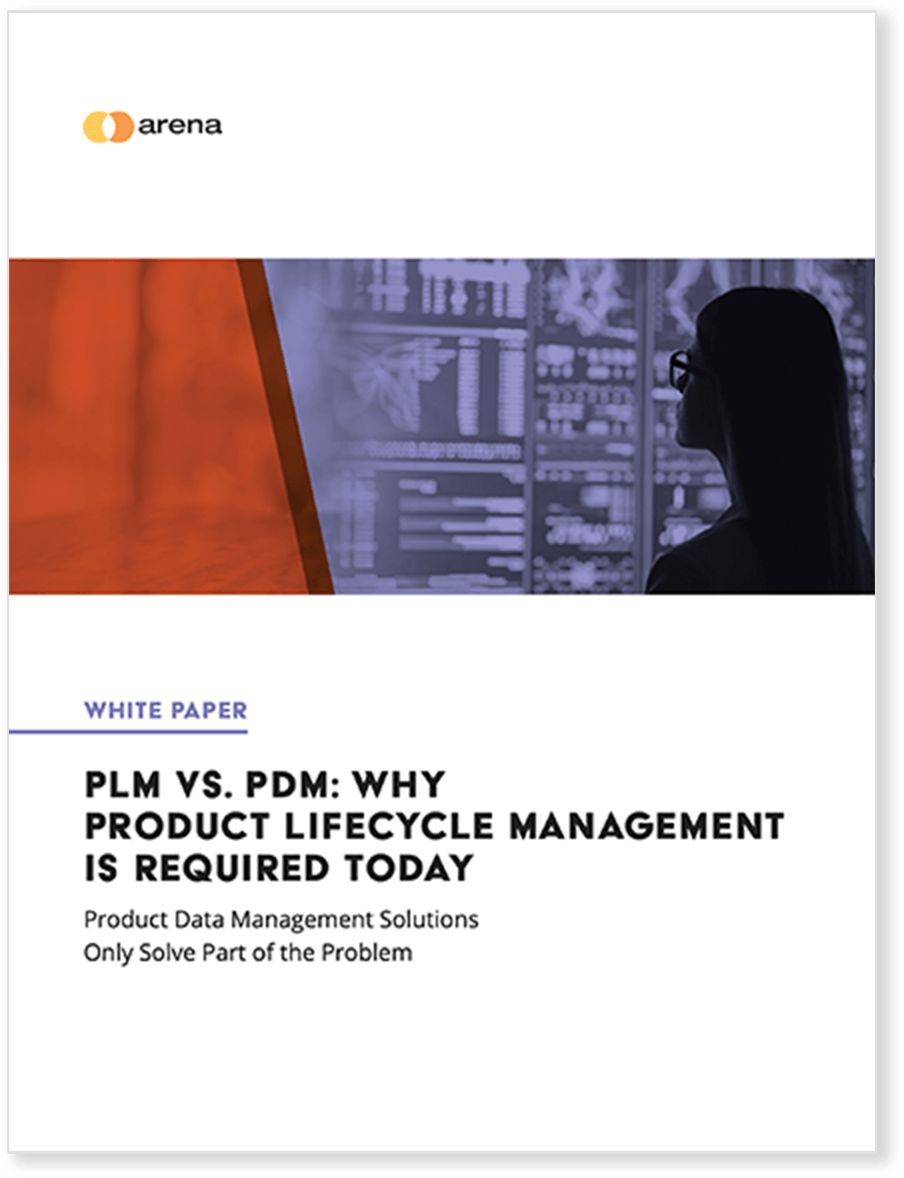Managing Your New Product Development (NPD) Process
A Product Development Platform for Each New Product Development Stage

Creating quality products in this fast-paced world isn’t easy. Product development involves multiple teams, locations, partners, suppliers, and vendors. These dispersed teams must be synchronized to the same design, ensure regulatory compliance, stay on budget, and respond to customer demands. You want to deliver better products, faster and easier. And you want to create innovative solutions to change the world.
An effective new product development (NPD) process is critical to meeting your goal. Once marketing has established a need, your NPD process generally follows these design stages from idea to manufacturability: development, limited production, and full production. At each stage, the product team further defines the product and adds information to your product record, so you have everything needed to manufacture, market, and support the product. While speed, quality, and cost are all important metrics in each NPD stage, the team prioritizes one metric during each phase.
A product development platform accelerates new product development while reducing expenses, increasing profitability, and speeding the time to market. Such a platform supports the entire process by managing the product record—all the product information structured around the bill of materials (BOM). Product development functionality includes change management, quality management, requirements management, and project management. With all this product data in one place, your team has what it needs to meet each NPD phase goal.
Development Phase
Development includes specification, design, and prototype activities, resulting in a product that meets market needs. The inputs to this phase are written specifications based on market research combined with technical insight from the engineering team. The development team iterates designs and specifications based on simulations and prototype results. What is the feedback on the look and feel? How does the prototype compare to market needs? What design gaps need to be resolved in the next prototype iteration? The development phase is complete when all the information required for limited production, the defined stage-gate, is complete. In the development stage, production speed rules at (almost) any cost.
Solution Support for Speed in the Development Phase
Integrates with CAD Tools
Integration with eCAD and mCAD tools speeds the development phase. It accelerates system integration, ensuring all the components fit and work together. And it reduces the time needed to rekey information.
Tracks Progress Against Requirements
Tracking progress against requirements accelerates the development phase by providing insight. Management and the team itself can easily see completed requirements as well as unmet ones. Observing this progress informs good decisions on balancing resources.
Provides Instant, Controlled Access to Needed Product Information
Providing instant, controlled access to needed product information in this phase reduces waiting and ensures version control for critical documents.
Limited Production Phase
The limited production phase focuses on working out the supply chain and manufacturability aspects of the design. The team checks to make sure you can source the OTS parts and that manufacturers can build custom parts to your specified tolerances. Can your supply chain partners manufacture products that meet your quality goals? This is an iterative step where specifications, work instructions, and tests need to be revised to meet design for manufacturing goals. The phase is complete when the defined stage-gate, all the information required for full production, is complete. In the limited-production stage, product quality is the number one priority.
Solution Support for Quality in the Limited Production Phase
Manages the Approved Manufacturers List
Quality products need quality components. Managing the approved manufacturers list (AML) is a crucial step toward full production. Sourcing and engineering work together to find parts that meet availability and quality needs. Managing the AML with the rest of the design documentation provides visibility to the extended product team.
Controls Changes to Supporting Documentation
Quality products are built and tested using the latest assembly instructions, work instructions, test instructions, and packaging specifications. You will have revision-controlled instructions, procedures, and specifications as part of your complete product record. Therefore, you will avoid errors down the line, because everyone will have the current revisions of a document they need to build, test, or support your product.
Integrates with ERP
Integration with ERP and other enterprise systems improves quality. Manufacturing receives the latest released design, minimizing scrap and rework from building to a past revision. ERP integration also eliminates errors caused by rekeying information.
Tracks Progress on the Phase Tasks
Project management helps meet quality goals by keeping track of tasks and resources for the entire product team. Seeing progress on every task—with the deliverable—helps ensure each task is complete.
Manages CAPA Processes
The corrective and preventive action (CAPA) is a fundamental quality system process. With a product development platform, your quality processes are integrated with the product record. This single source of truth for the product record, engineering changes, and quality processes provide visibility into the entire CAPA process, including the action needed.
Full Production Phase
In the full production phase, building to volume at a competitive cost of goods sold (COGS) is the goal. But the product teamwork is not done yet. The production and engineering teams work together to solve challenges. How can COGS be reduced? Where is the risk for parts shortages? Does the quality meet market expectations? Product changes must be controlled, as they impact inventory and sometimes your customers. In the full production stage, product teams work to reduce costs without sacrificing quality. The phase continues until the product is replaced or phased out.
Solution Support for Cost in the Full Production Phase
Enables Collaboration with Your Various Suppliers
Your supplier chain partners are experts in their fields. Collaborating with them to leverage their expertise can help you meet your COGS goals.
Provides Visibility into Volume Component Costs
With a cloud-based product development platform, you can reduce purchased component costs by aggregating the use of all individual components across multiple products. Knowing the total aggregated usage of the components in advance provides leverage to negotiate with supply chain partners on price-based volumes.
Controls Engineering Changes
Fast, accurate engineering change save time by reducing scrap and rework from building to old revisions. Access to pending changes helps sourcing procure components that will soon be phased out.
Integrates with Your CRM System for a Closed-Loop Formal Complaint Process
Provide quality professionals and engineers the customer information needed to efficiently drive the resolution of complaints. Complaints and other customer feedback inform sustaining engineering improvements.
Streamline Your New Product Development Processes
Throughout the NPD process, your product team generates and revises mission-critical documentation. Relying on shared drives, email, or other ad hoc systems will hinder your team’s ability to operate in sync to bring good quality products to market quickly. No matter where you are today with your NPD process, schedule a demo with Arena to see for yourself how easy it can be.



